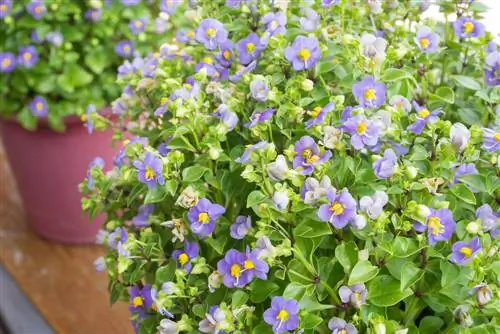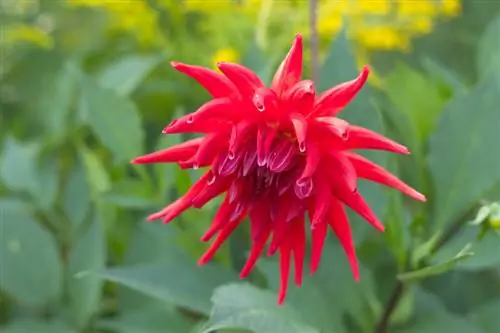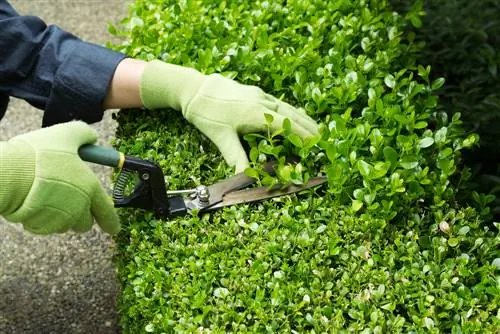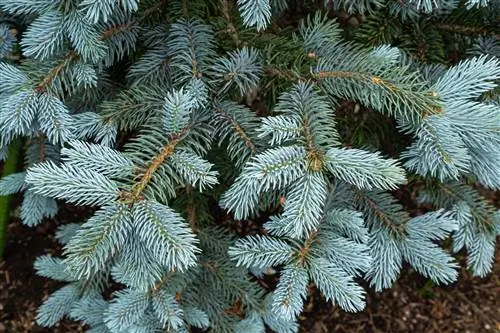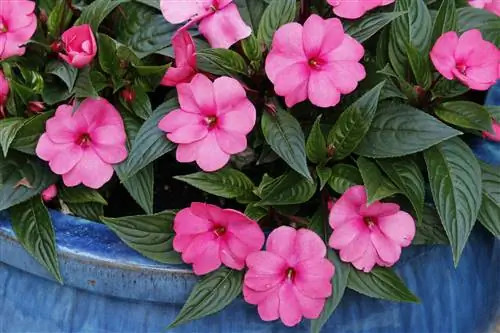- Author admin [email protected].
- Public 2023-12-16 16:46.
- Last modified 2025-01-23 11:21.
The blue violet (Exacum affine) is often colloquially referred to as the Indian violet, although it only has purely visual similarities to the violet native to this country. If this plant is cared for properly, it can delight in summer with a flowering period that lasts up to ten weeks.
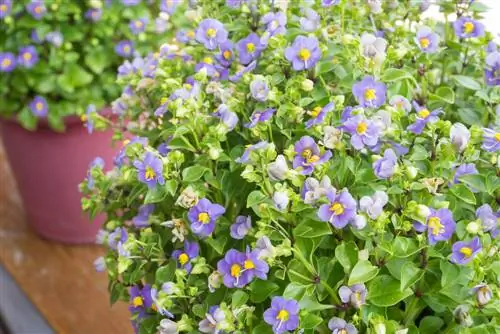
How do you properly care for a Blue Lieschen?
The Blue Lieschen requires moderate watering about every three days, a bright location without direct midday sun, regular removal of wilted flowers and, if necessary, fertilization every 14 days. It is sensitive to frost and should not be overwintered outdoors.
How often should the Blue Lieschen be watered?
The Blue Lieschen should not have its roots directly in water, but excessive dryness can lead to all flowers being dropped very quickly. Optimal conditions for he althy growth and appearance are present when the top layer of soil around the plant dries out slightly between waterings, but can never dry out down to the roots. With moderate watering every three days or so, you can create ideal conditions for the Blue Lieschen.
What should you consider when repotting or transplanting the Blue Lieschen?
Similar to marigolds and other balcony and grave plants, Blue Lieschen is a rather short-lived (two-year) plant that is usually only cared for for one season. Therefore, for many plant lovers, the question of repotting the Blue Lieschen doesn't even arise. However, specimens that are in particularly small planters when purchased can be transplanted into a larger pot at any time without any concerns.
Can a Blue Lieschen be cut back?
In horticultural businesses, the Blue Lieschen is often treated with special growth inhibitors so that it develops a particularly compact and aesthetically pleasing shape. You can easily shorten shoots that are too long (outside of the hot mid-summer phase). You should also regularly pick off wilted flowers.
Are there any pests that prefer to attack the Blue Lieschen?
Occasionally colonies of aphids are observed on the blue lizard. Otherwise it is by no means susceptible to pest infestation.
Which diseases or care errors often occur with the Blue Lieschen?
It is not uncommon for location and care errors to lead to the following problems:
- Flowers fall off
- Leaves are wilting
- Formation of gray mold on the substrate surface
While the flowers often fall off if the soil in the pot is too dry, wilting leaves can also indicate a location that is too sunny or waterlogged. A sufficiently ventilated location or substrate replacement can protect against gray mold infestation.
Should the Blue Lieschen be fertilized?
The potting soil of blue lizards purchased in pots is usually already pre-fertilized, so if the plant is cultivated seasonally, additional fertilization is not absolutely necessary. However, if blue lizards are grown from cuttings or seeds, they should be fertilized in the irrigation water every 14 days between spring and autumn with a liquid fertilizer (€12.00 on Amazon).
Can a Blue Lizard be overwintered outdoors?
The Blue Lieschen is considered very sensitive to frost, but can overwinter in a bright and cool room. Since the plants are short-lived, overwintering is only worthwhile for the purpose of cutting cuttings from the mother plants in January and February.
Tip
A Blue Lieschen grows particularly well in a bright location, but cannot tolerate direct sunlight during midday. So it's better to place it in partial shade or in a place with morning and evening sun.

